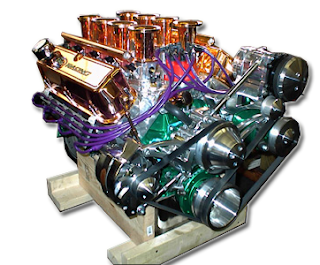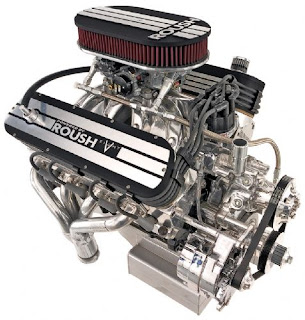Being as how I've been on the step by step tear down articles, and there starting to get just a bit old, I think I'll just yammer about another subject that is near and dear to my heart, and most other true muscle car people.
This of course is like all of the rest of the steps when building a muscle car, you need to first start by thinking about what it is you want the engine to do. Do you want a good reliable every day driver, or a race car, because there is a huge difference between the two engines.
There are three or four major things that make the biggest difference in performance, and they would be, a cam, heads, and carburetion. After these the next would be bore and stroke, but the biggest gain in performance will come from cam and heads.
You need to really think this one out, what do you want to do with the car, if you build an all out race engine, it will not be very good on the street as far as drive ability, since race engines are meant to race, and not to drive every day.
If you want to do a little of both, you can build a street/strip engine, and get the best of both worlds, but don't expect to go to the track and hammer all of the race cars. Stick to a street category, like pro street, now that I've had my rant, I'll in a very short manor explain how the performance upgrades will affect your car.
First and foremost you'll want to make sure that however you build your engine, that you do it with matching parts, in other words, match your heads, intake, and cam all together, all of the manufactures will be glad to help you with this.
The idea is this, if your building a daily driver, you'll need good power from idle to about 3,000 rpm, so you'd want to buy parts with a power band from 1,500 - 3,000 rpm, so you'd look at the specs on the cam, heads, and intake manifold that you want to buy. Next, match them as close to this range as possible.
If your looking for something a bit more high performance, you'd want to step up to a cam that will provide good power from about 2800 - 6200 rpm. This would be a mid level performance cam, and still aright on the street, but you'd lose a bit of your low end power and torque.
If you understand what I'm saying here, it is simply this, a performance cam usually will do it best work in the mid rpm range. This particular cam profile would have .480 lift on both the intake, and exhaust valves, and a duration of 228 @ 50 thousandths lift, this particular cam is built by crane cams.
This is really close to the specs of the off road special cam that was available for the 1969 Z/28 camaro, the same cam that would have come with the crossram equipped car, and is still a street able cam, but would begin to lean more to the race side of things, and lees to the daily driver side.
Now to match up to this cam shaft, Chevrolet used a set of camel back heads, which had 2.02 inch intake valves and 1.60 exhaust valves, at the time this was a true high performance head, and once again it needs to match to the cam, and intake manifold.


